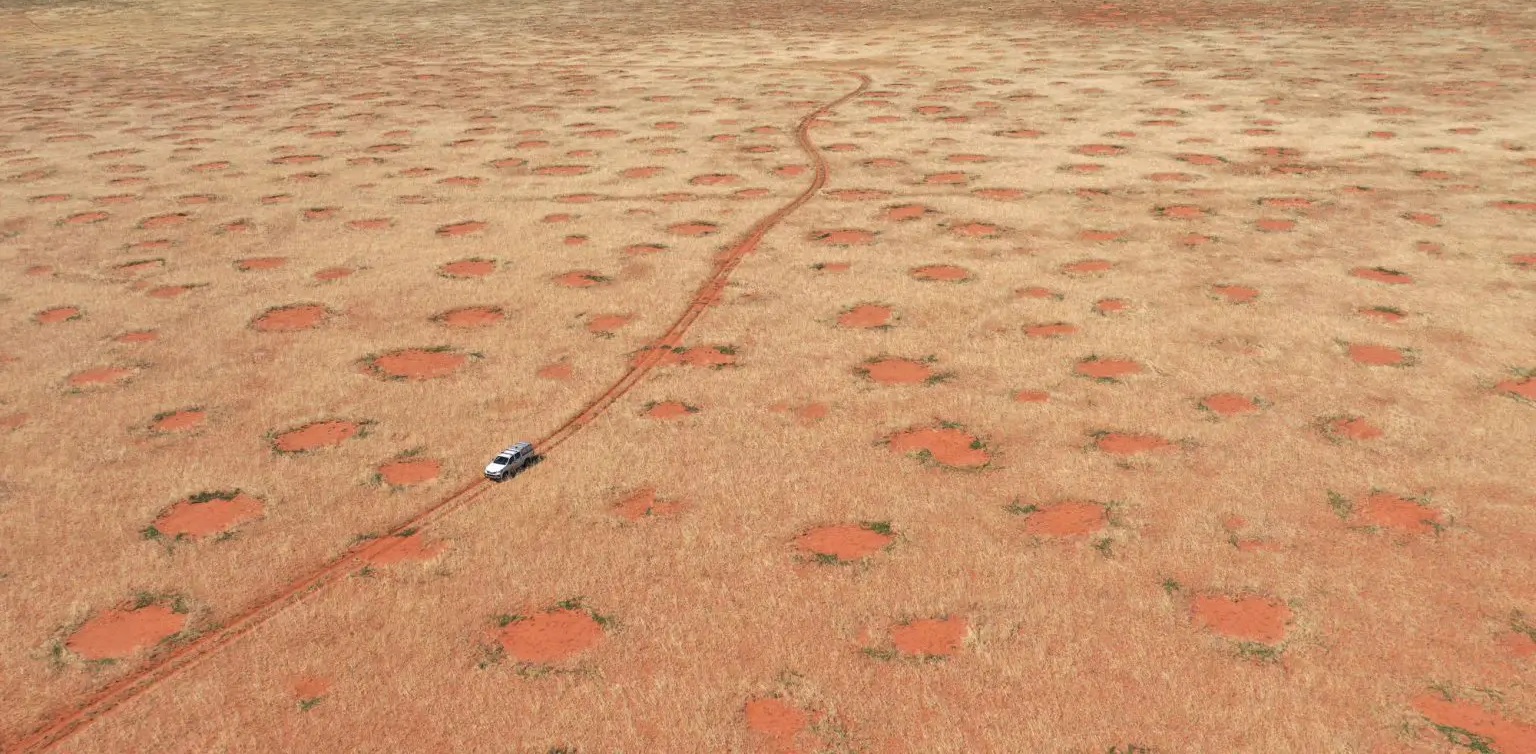For almost 50 years, researchers have been perplexed by the origin of Namibia’s fairy circles. It came down to two primary hypotheses: either termites were responsible or plants somehow managed to organize themselves. Now, researchers from the University of Göttingen have shown that the grasses inside the fairy circles perished shortly after rainfall in the Namib Desert, but termite activity did not cause the bare patches.
Millions of fairy circles may be found in the Namib, between 50 and 90 miles (80 and 140 kilometers) from the coast. These circular holes in the grassland are each a few meters wide, and collectively they create a recognizable pattern that can be seen for miles around. The researchers studied sporadic rain events in numerous desert regions and analyzed grasses, their roots and shoots, and potential termite root damage.
These fairy circles are named for their similarities to mushrooms’ “fairy rings.” Although the name brings to mind mystical sprites, scientists have produced several possible, secular explanations for them. But the truth of how they form remains murky and is a subject of intense debate. Are they caused by small amounts of natural gas seeping into the soil, as proposed by South African scientists in 2011? Or are they perhaps a result of harvester termites’ foraging and nesting habits, as a University of Hamburg researcher posited in 2013? Or as hypothesized by an international team in 2015, is it a quirk of desert environments that vegetation organizes in ring patterns?
One theory has looked to blame termites for these dry patches, while the other considers the grasses’ evolution. Scientists have gone back and forth for decades, but a new study offers what may finally be evidence for a clear explanation.
Ravi et al. revisit the idea that plants self-organize to find water by studying the interactions of water, soil, and vegetation in Namibian fairy circles. The matrix of fairy circles in the Namib Desert, where the study took place, spans more than 1600 kilometers of arid grassland.
The team tested and compared three sets of soil samples from the bare interior, highly vegetated edge, and moderately vegetated exterior of each fairy circle. For each sample, they conducted infiltration experiments to observe the rates of moisture soaking into the soil, measured the levels of soil moisture and grass biomass, and analyzed the sizes of individual soil grains.
